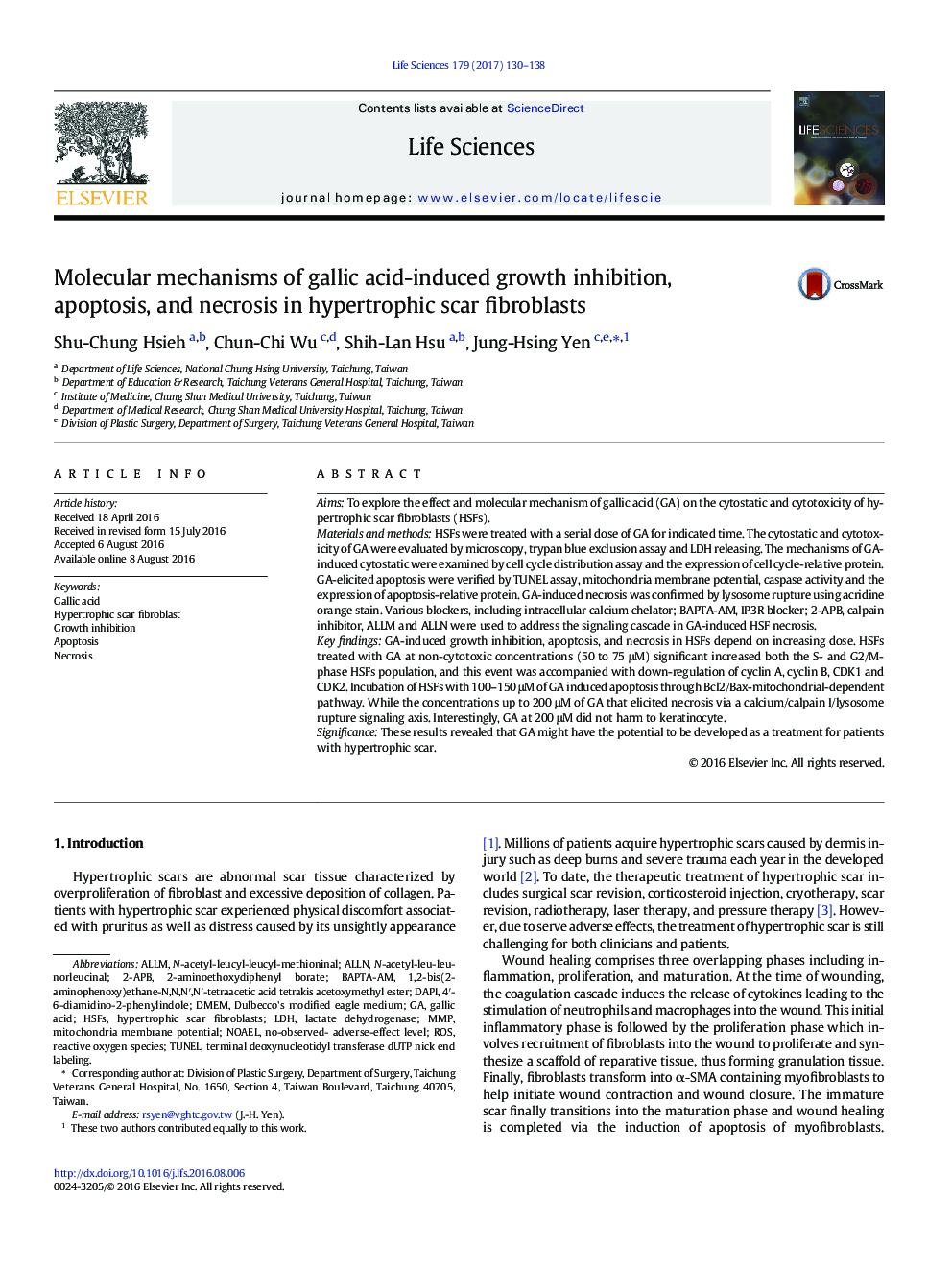| کد مقاله | کد نشریه | سال انتشار | مقاله انگلیسی | نسخه تمام متن |
|---|---|---|---|---|
| 5556927 | 1560549 | 2017 | 9 صفحه PDF | دانلود رایگان |
AimsTo explore the effect and molecular mechanism of gallic acid (GA) on the cytostatic and cytotoxicity of hypertrophic scar fibroblasts (HSFs).Materials and methodsHSFs were treated with a serial dose of GA for indicated time. The cytostatic and cytotoxicity of GA were evaluated by microscopy, trypan blue exclusion assay and LDH releasing. The mechanisms of GA-induced cytostatic were examined by cell cycle distribution assay and the expression of cell cycle-relative protein. GA-elicited apoptosis were verified by TUNEL assay, mitochondria membrane potential, caspase activity and the expression of apoptosis-relative protein. GA-induced necrosis was confirmed by lysosome rupture using acridine orange stain. Various blockers, including intracellular calcium chelator; BAPTA-AM, IP3R blocker; 2-APB, calpain inhibitor, ALLM and ALLN were used to address the signaling cascade in GA-induced HSF necrosis.Key findingsGA-induced growth inhibition, apoptosis, and necrosis in HSFs depend on increasing dose. HSFs treated with GA at non-cytotoxic concentrations (50 to 75 μM) significant increased both the S- and G2/M-phase HSFs population, and this event was accompanied with down-regulation of cyclin A, cyclin B, CDK1 and CDK2. Incubation of HSFs with 100-150 μM of GA induced apoptosis through Bcl2/Bax-mitochondrial-dependent pathway. While the concentrations up to 200 μM of GA that elicited necrosis via a calcium/calpain I/lysosome rupture signaling axis. Interestingly, GA at 200 μM did not harm to keratinocyte.SignificanceThese results revealed that GA might have the potential to be developed as a treatment for patients with hypertrophic scar.
Journal: Life Sciences - Volume 179, 15 June 2017, Pages 130-138
